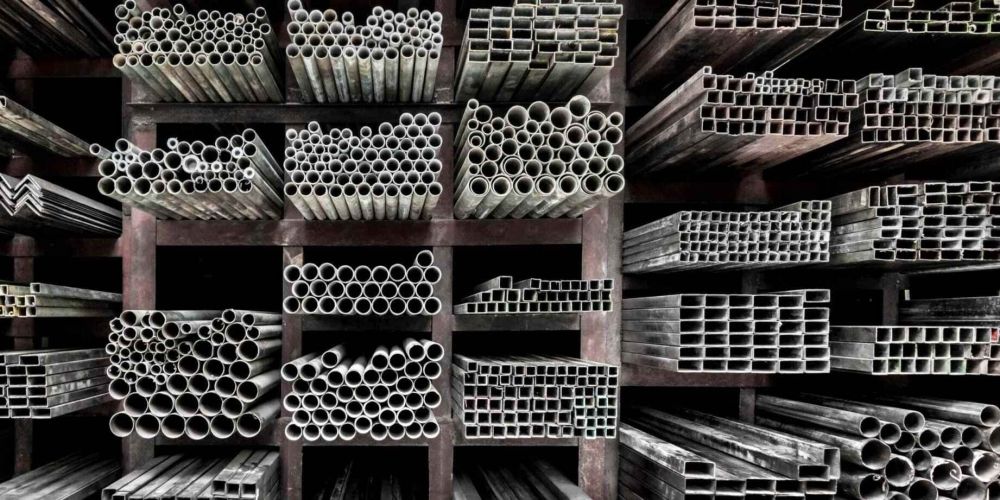
Ever wonder why some metals stick to magnets and others don't? All you need is a basic understanding of how magnetism works on an atomic level. As it turns out, only a few metals in the periodic table - iron, nickel, cobalt and their alloys - exhibit strong magnetic properties. Magnetic metals have something in common at the smallest scale: unpaired electrons spinning in the same direction. These spinning electrons create a magnetic field, which is why the metals themselves become little magnets.
Understanding Magnetism and Magnetic Metals
Not all metals are magnetic. To understand which metals are magnetic, you first need to know some basics about magnetism.
Magnetism occurs when the electrons in an atom spin in the same direction. This is known as ferromagnetism. Ferromagnetic metals - like iron, nickel, and cobalt - have strong magnetic properties because their electrons align in the same direction.
What Causes the Spin?
The electrons in metal atoms act like tiny magnets. Normally, the magnetism of electrons cancels each other out. But in some metals, the electrons team up and spin in the same direction. This is known as ferromagnetism, and it's what makes metals like iron strongly magnetic.
Two factors determine a metal's magnetic strength:
- The number of unpaired electrons: The more unpaired electrons spinning in the same direction, the stronger the magnetism. Iron, cobalt, and nickel have two or more unpaired electrons per atom.
- The alignment of electron spins: When billions of unpaired electrons in a metal are spinning in the same direction, their magnetic fields add together to create a strong overall field. In most metals, the electron spins are randomly aligned and cancel out.
Ferromagnetic Metals
The most common ferromagnetic metals are:
Iron
Iron is the most well-known ferromagnetic metal. It’s what most people think of when they imagine a magnetic material. Iron filings are strongly attracted to magnets and were used by early scientists like Faraday to visualise magnetic fields.
Pure iron (Fe) has a high magnetic permeability, meaning its atomic structure readily forms magnetic domains that are strongly aligned in the presence of an external magnetic field. This is what gives iron its strong magnetic properties.
Steel, an alloy containing mostly iron with carbon and other elements, also demonstrates ferromagnetism. In fact, most common magnets contain steel or iron-based alloys.
Nickel
Nickel (Ni) is another metal that exhibits ferromagnetism. While not quite as magnetic as iron, nickel and its alloys are still attracted to magnets and can be used to make permanent magnets. Nickel’s Curie temperature, the point above which its ferromagnetism disappears, is higher than iron’s, so it can operate at higher temperatures.
Nickel alloys like Alnico contain aluminium, nickel, cobalt and copper. They are highly magnetic and were used to make some of the first commercial magnets.
Cobalt
Cobalt (Co) is the third naturally ferromagnetic metal. Like nickel, cobalt has a higher Curie temperature than iron, so it maintains its magnetism at higher temperatures. Cobalt’s atomic structure readily forms magnetic domains, though not quite as strongly as iron.
Cobalt alloys are used to make high-performance permanent magnets for applications like electric vehicle motors, wind turbines and medical devices. Common cobalt magnet alloys include Samarium cobalt (SmCo) and Neodymium-iron-boron (NdFeB) which contain cobalt along with rare earth elements.
Other ferromagnetic metals include gadolinium and dysprosium, though they are more expensive and less commonly used.
Paramagnetic Metals
While ferromagnetic metals are strongly magnetic, paramagnetic metals like aluminium become slightly magnetic in the presence of a magnetic field. These include:
Aluminium
Aluminium is a lightweight, silvery metal commonly used for aircraft parts, cans, and foil. Despite its abundance, aluminium is paramagnetic but not strongly magnetic. It is only attracted to very powerful magnets.
Copper
Copper is another paramagnetic metal with a reddish-brown colour. It is often used for electrical wiring, plumbing, and cookware. Copper will weakly interact with magnets but is not strongly magnetic itself. Some copper alloys like brass (copper and zinc) are also paramagnetic.
Platinum
Platinum is a rare, silvery-white metal used in catalytic converters, laboratory equipment, and jewellery. Platinum is one of the most paramagnetic pure metals and demonstrates a small amount of magnetism when exposed to magnetic fields. However, platinum is not ferromagnetic and does not become permanently magnetised.
Antiferromagnetic Metals
Antiferromagnetic metals are metals that are magnetic in an unusual way. Rather than their magnetic spins aligning in the same direction, as in ferromagnetic metals like iron, the spins in antiferromagnetic metals align in opposite directions.
Some common antiferromagnetic metals include:
Manganese
A hard, silvery metal used to produce alloys like stainless steel. Its magnetic spins align in opposite directions.
Chromium
A steel-blue metal used to make stainless steel. It has an antiferromagnetic structure below a certain temperature where its spins oppose each other.
Uranium
A radioactive, silvery-white metal with antiferromagnetic properties. Its magnetic spins align in opposite directions.
These metals demonstrate unusual magnetic behaviour. As their temperature drops below a certain point, known as the Néel temperature, their magnetic spins spontaneously align in opposite directions. This produces no net magnetism, as the opposing spins cancel each other out. However, this antiferromagnetic alignment can be disrupted by a strong external magnetic field, which can force the spins to align in the same direction instead.
Some antiferromagnetic materials have applications like data storage, where their spins can be manipulated to store information. They are an interesting class of metals with peculiar magnetic properties not found in more familiar ferromagnetic materials.
Applications of Magnetic Metals
Magnetic metals have many practical applications in our daily lives and in industry. Their ability to be attracted to magnetic fields allows them to be used in a variety of ways.
Motors and Generators
Magnetic metals like iron and steel are essential components of electric motors and generators. The magnetic fields created by the flow of electric current attract and repel the metal parts, causing them to spin. This motion then powers a variety of devices like fans, pumps and electric vehicles.
Data Storage
As mentioed above, certain alloys of cobalt, nickel and iron are used to make the platters that store data in hard disc drives. The magnetic fields of these alloys can be aligned in different directions to represent binary data that is then read by the drive heads. This allows for dense data storage in a relatively small space.
Medical Applications
Magnets containing alloys like neodymium-iron-boron are used in magnetic resonance imaging (MRI) machines. The strong magnetic fields they produce are used to align the nuclear magnetic moments in the body. Radio waves are then used to manipulate the moments, and the signals emitted are used to generate images.
Lifting and Sorting
Electromagnets containing coils of copper wire around an iron core are used for heavy lifting in scrap yards and manufacturing. When an electric current flows through the coils, it produces a magnetic field that can lift large metal objects. The magnets can then be turned on and off to release the objects. Similar electromagnets are used in recycling centres to separate magnetic metals from non-magnetic waste.
The unique properties of certain magnetic metals have enabled so many technologies we rely on in the modern world. Although invisible, their effects are hugely significant and wide-reaching. The applications of magnetic metals will likely only continue to expand in the future with advances in fields like renewable energy, transportation and medicine.






